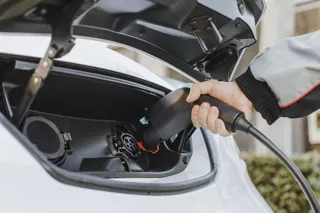Fleets are being urged to only test electric vans during the winter to ensure that they are fit-for-purpose throughout the year.
The warning, from James Rooney, head of fleet at Network Rail, comes as fleets aired their frustrations at the real-world ranges being achieved in electric vans versus manufacturer claims in June's Fleet News at 10 webinar.
Rooney told Fleet News at 10: “Test the vehicles before you commit to them in your own fleet with your own payload and don't test it now. Test it in winter.
“You will see a stark difference between summer and winter operation and WLTP figures.
“It's nothing new, we've had this since the days of petrol and diesel. We were all used to it and we all just cracked on with it. It didn't matter so much, but with EVs clearly it does.”
He continued: “Load isn't the biggest factor, the biggest factor is driving style, seasonal temperature and tyres.”
From experience, Rooney expects to see a 30-40% reduction in range on medium and small vans, on average across the year, while on larger vehicles the range reduction is up to half.
“When you’re towing, it becomes laughable,” he said.
Arval has released research showing the impact of payload on electric light commercial vehicles (LCVs).
For mid-size electric vans, a half load resulted in a dip of 7% against the real-world range and an 11% dip with a full load.
However, add in towing and the range was 24% lower than the unladen real-world maximum.
These drops, say Arval, represent a 14% drop between fully loaded and fully loaded plus towing.
For large electric vans, the half-load figure recorded was an 11% drop, for a full load 14% and when towing the range was 31% lower than the real-world maximum.
The Worldwide harmonized Light vehicles Test Procedure (WLTP) is a global standard for determining the levels of pollutants, CO2 emissions and fuel consumption of traditional and hybrid cars, as well as EVs.
Lorrna McAtear, fleet manager at National Grid, said: “We need to get WLTP to change, because the standards that they use and are old.
“A lot of the standards for WLTP are basically wrong... more needs to be done that actually reflects real world.”
McAtear added: “I get the challenges the OEMs have in stating in a figure, but they're also doing the bare minimum they can get away with based on WLTP and it is not real world.”
The Association of Fleet Professionals (AFP) has called for more accurate range labelling on electric vans after finding that they are falling short of official figures by up to 50%.
Paul Hollick, chair of the AFP told Fleet News at 10: “We've bought all these vehicles in good faith based on their WLTP figures.
“We knew they were unladen, so you would expect some sort of range differential, but we want it clearly signposted, with a moderate, average amount of load, what the range would be.
“We also want a seasonal WLTP figure as well, in terms of what we would expect in the winter, in the summer, in the spring and in the autumn.”
Appearing alongside Hollick on the Fleet News at 10 panel, Scott Kennedy, franchise strategy manager at the Herd Group, said: “We need to just ensure that there is something to allow people to make informed decisions. It needs to be open and transparent.
“There just needs to be more accurate data there to allow people to make those informed decisions.”
> Interested in comparing electric vehicle data? Check out our EV tool.
> Interested in ensuring the efficient use of EVs. Check out our dedicated editorial sections: Insight & policy | EV news | Charging & infrastructure | Costs & incentives | Benefit-in-kind | EV case studies | EV road tests






















Login to comment
Comments
No comments have been made yet.